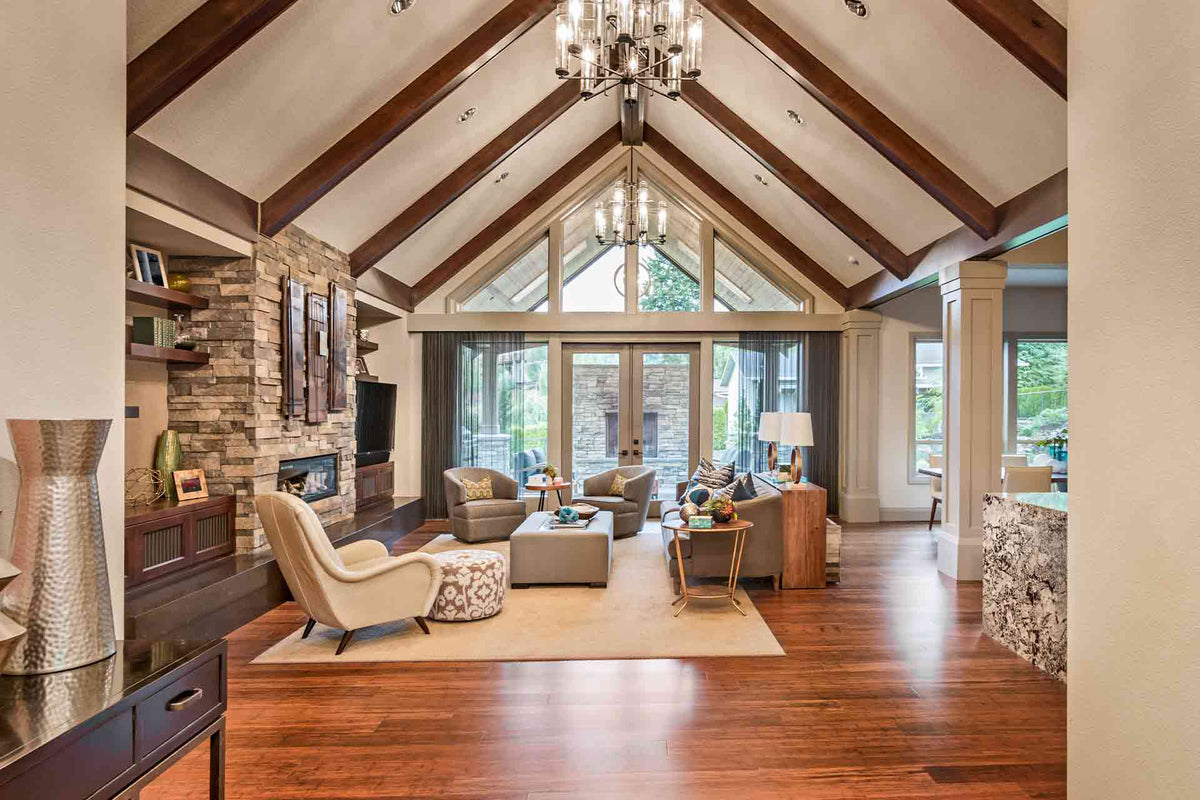
A Guide to the Best Lights for Sloped Ceilings
|
|
Time to read 6 min
Free shipping for $500+ orders to Sydney Metro
|
|
Time to read 6 min
Sloped ceilings can add a unique charm and spacious feel to any room. However, they often present challenges when choosing and installing the right lighting solutions. Selecting inappropriate fixtures can lead to uneven light distribution, glare, and an unwelcoming ambience.
This comprehensive guide will explore the best lighting options for sloped ceilings, providing practical tips and innovative ideas to illuminate your space effectively. We'll cover various lighting types, installation advice, maintenance tips, and answer frequently asked questions to help you make informed decisions for a beautifully lit home.
Table of Content
Sloped ceilings, often found in loft conversions, attic spaces, and homes with unique architectural designs, introduce both opportunities and challenges for lighting. Their varying angles and heights can make it tricky to achieve a well-lit and inviting atmosphere.
There are various types of sloped ceilings, each with unique characteristics that influence lighting choices:
Track lighting offers a versatile solution for sloped ceilings, especially those with exposed beams. Installing tracks horizontally along beams or directly onto the ceiling allows for flexible lighting arrangements. Spotlights on the track can be easily repositioned to highlight specific areas or architectural features. However, it's crucial to avoid installing tracks vertically on a sloped ceiling, as this can cause the pendant shades to bunch together, compromising both aesthetics and light distribution.
While standard recessed lights aren't ideal for sloped ceilings due to potential glare, adjustable and angle-cut recessed lights offer a sleek and effective solution. Adjustable recessed lights, also known as gimbals or directional lights, can be tilted to direct light downwards, minimising glare and ensuring even illumination. Angle-cut fixtures, specifically designed for sloped ceilings, feature a trim aperture cut at an angle to match the ceiling slope, allowing the light to point straight down.
Layered lighting involves combining different types of lighting to create a balanced and flexible lighting scheme. This approach is particularly effective for sloped ceilings, as it allows you to address various lighting needs within a single space. For instance, you could combine ambient lighting from recessed lights with task lighting from spotlights and accent lighting from track lights. This layered approach ensures adequate illumination for different activities while adding depth and visual interest to the room.
When installing pendant lights or other hanging fixtures, ensuring enough headroom to prevent bumping into them is crucial. Consider the slope of the ceiling and the height of individuals in the household.
Adjustable fixtures are essential for sloped ceilings. They allow you to direct light effectively and compensate for the ceiling angle, ensuring even illumination.
Sloped ceilings can exacerbate shadows. Carefully position lights to minimise harsh shadows and create a balanced lighting effect. Consider using multiple light sources to distribute light evenly.
Opt for LED bulbs for sloped ceiling fixtures. LED bulbs have a significantly longer lifespan compared to traditional incandescent bulbs, reducing the frequency of replacements. They are also more energy-efficient, saving you money on electricity bills in the long run.
Lighting sloped ceilings presents both opportunities and challenges. Understanding the different types of sloped ceilings and the lighting solutions that work best with them is crucial for creating a functional and aesthetically pleasing space.
By carefully considering the factors discussed in this guide, such as fixture type, placement, and layering techniques, you can illuminate your sloped ceilings effectively, enhancing the ambience and functionality of your home.
Standard recessed lights are not ideal for sloped ceilings because they are designed to shine light straight down, which can cause glare and uneven illumination.
You can prevent glare by using adjustable light fixtures that can be angled to direct light downwards and away from eye level.
The best type of pendant light for a sloped ceiling is one with an adjustable cord or rod, allowing you to customise the hanging height and ensure it hangs straight.
To ensure even lighting distribution, combine different types of lighting, such as recessed lighting for ambient light, track lighting for accent lighting, and pendant lights for task lighting.
LED bulbs are highly recommended for sloped ceiling lights due to their energy efficiency, long lifespan, and minimal heat output.





